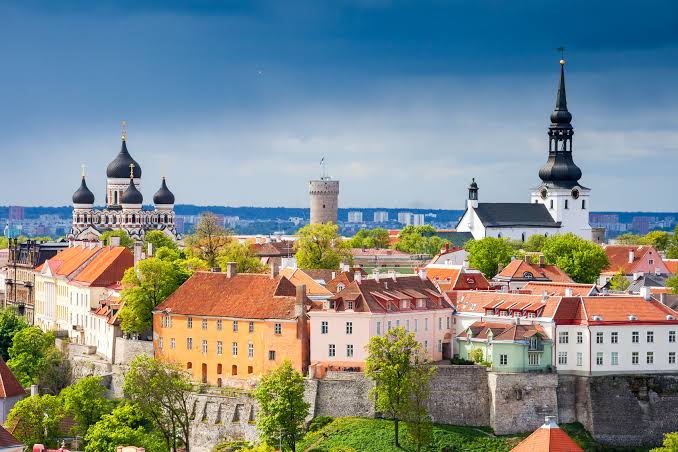
Cimate change and global warming are terms that have become synonymous with environmental degradation and sustainability. But what exactly do they mean?
Climate Change:
Climate change refers to the long-term warming of the planet due to an increase in average global temperatures. This warming is primarily caused by human activities that release greenhouse gases, such as carbon dioxide and methane, into the atmosphere. These gases trap heat from the sun, leading to a rise in temperatures.
Global Warming:
Global warming is the gradual increase in the overall temperature of the Earth’s atmosphere, primarily caused by human activities that release greenhouse gases. It is a subset of climate change, focusing specifically on the warming aspect.
Causes:
1. Greenhouse gases:
Burning fossil fuels, deforestation, and land-use changes release carbon dioxide, methane, and other gases, leading to global warming.
2. Human activities:
Industrial processes, transportation, agriculture, and population growth contribute to increased greenhouse gas emissions.
3. Natural factors:
Volcanic eruptions, changes in solar radiation, and ocean currents also influence climate change.
Effects:
1. Rising temperatures:
Increased temperatures lead to more extreme weather events, melting glaciers, and altered ecosystems.
2. Sea-level rise:
Thawing polar ice caps and glaciers cause sea levels to rise, threatening coastal communities.
3. Extreme weather:
Climate change leads to more frequent and intense heatwaves, droughts, floods, and storms.
4. Water scarcity:
Changes in precipitation patterns and increased evaporation affect global water resources.
Solutions:
1. Transition to renewable energy:
Shift from fossil fuels to solar, wind, and hydroelectric power.
2. Energy efficiency:
Improve building insulation, use smart grids, and optimize energy consumption.
3. Carbon capture and storage:
Develop technologies to capture and store CO2 emissions.
4. Sustainable land-use:
Implement reforestation, agroforestry, and permaculture practices.
Here are some countries that are highly affected by climate change:
These Countries are highly effected by climate changes.
1. Bangladesh:
Sea-level rise, cyclones, and flooding threaten its densely populated coastal areas.
2. Maldives:
Rising sea levels and ocean acidification imperil this island nation’s existence.
3. Nepal:
Glacier melting, landslides, and floods impact its mountainous regions.
4. Somalia:
Droughts, famines, and displacement affect its vulnerable populations.
5. Tuvalu:
Sea-level rise and increased flooding threaten this small island nation’s survival.
6. Vanuatu: Cyclones, landslides, and sea-level rise impact its tropical islands.
7. Philippines:
Typhoons, landslides, and sea-level rise affect its coastal communities.
8. South Sudan:
Droughts, famines, and displacement exacerbate humanitarian crises.
9. Kiribati:
Sea-level rise, flooding, and saltwater intrusion threaten its freshwater resources.
10. Grenada:
Hurricane damage, sea-level rise, and coastal erosion impact its island economy.
11. Sri Lanka:
Droughts, floods, and landslides affect its agricultural and urban areas.
12. Cambodia:
Droughts, floods, and sea-level rise impact its Tonle Sap Lake and Mekong Delta.
13. Haiti:
Deforestation, landslides, and hurricanes worsen its environmental degradation.
14. Myanmar:
Cyclones, floods, and landslides affect its coastal and delta regions.
15. Djibouti:
Droughts, heatwaves, and water scarcity threaten its arid landscapes.
These countries are often characterized by:
- Low-lying coastal areas
- Limited economic resources
- High population density
- Dependence on agriculture on natural resources
- Vulnerability to extreme weather events
Keep in mind that climate change affects every country, but these nations face unique and pressing challenges.
Climate change and global warming are complex issues requiring collective action. By understanding the causes, effects, and solutions, we can work together to mitigate their impacts. Remember, every small action counts, and individual efforts can collectively lead to significant positive change. Let’s take responsibility for our planet’s future and strive for a more sustainable world.
What Can We Do?
Individuals, communities, organizations, and governments can all play a role in addressing climate change and global warming. Here are some steps we can take:
1. Reduce energy consumption:
Use energy-efficient appliances, turn off lights and electronics when not in use, and insulate homes.
2. Switch to renewable energy:
Invest in solar panels, wind turbines, or renewable energy credits.
3. Conserve water:
Take shorter showers, fix leaks, and use water-efficient appliances.
4. Use public transportation or walk/bike:
Reduce reliance on fossil fuels by using public transportation, walking, or biking.
5. Eat a plant-based diet:
Animal agriculture contributes to greenhouse gas emissions, so reducing meat consumption can help.
6. Support climate-friendly policies:
Contact representatives, participate in climate protests, and vote for climate-conscious leaders.
7. Educate yourself and others:
Stay informed about climate change and share knowledge with friends, family, and community members.
8. Support renewable energy projects:
Invest in community solar programs or renewable energy crowdfunding platforms.
9. Reduce waste:
Recycle, compost, and reduce single-use plastics.
10. Plant trees and support reforestation efforts:
Trees absorb carbon dioxide, so planting and preserving trees can help offset emissions.
The responsibility for climate change is a complex issue with various factors and actors involved. Here’s a breakdown:
Historical responsibility:
Industrialized countries, such as the United States, European nations, and Japan, have contributed significantly to greenhouse gas emissions since the Industrial Revolution.
These countries have benefited economically from fossil fuel use, while also causing environmental harm.
Current responsibility:
Countries with high per-capita emissions, such as the United States, Australia, and Saudi Arabia, continue to contribute significantly to greenhouse gas emissions.
Emerging economies like China and India are also increasing their emissions as they industrialize and grow.
Corporate responsibility:
Fossil fuel companies, such as ExxonMobil, Shell, and BP, have played a significant role in extracting and burning fossil fuels, contributing to climate change.
Other industries, like agriculture, aviation, and transportation, also contribute to emissions.
Individual responsibility:
Personal choices, such as energy consumption, transportation, and dietary habits, can contribute to greenhouse gas emissions.
Individuals can also advocate for climate policies and support renewable energy.
Government responsibility:
Governments have a crucial role in setting climate policies, regulating emissions, and promoting sustainable practices.
They can also invest in renewable energy, energy efficiency, and climate resilience.
In summary, responsibility for climate change is shared among:
1. Historical emitters (industrialized countries)
2. Current emitters (countries with high per-capita emissions)
3. Corporations (fossil fuel companies and other industries)
4. Individuals (personal choices and advocacy)
5. Governments (climate policies and regulation)
Addressing climate change requires cooperation and collective action from all these actors. Let’s make our earth best place to live.








